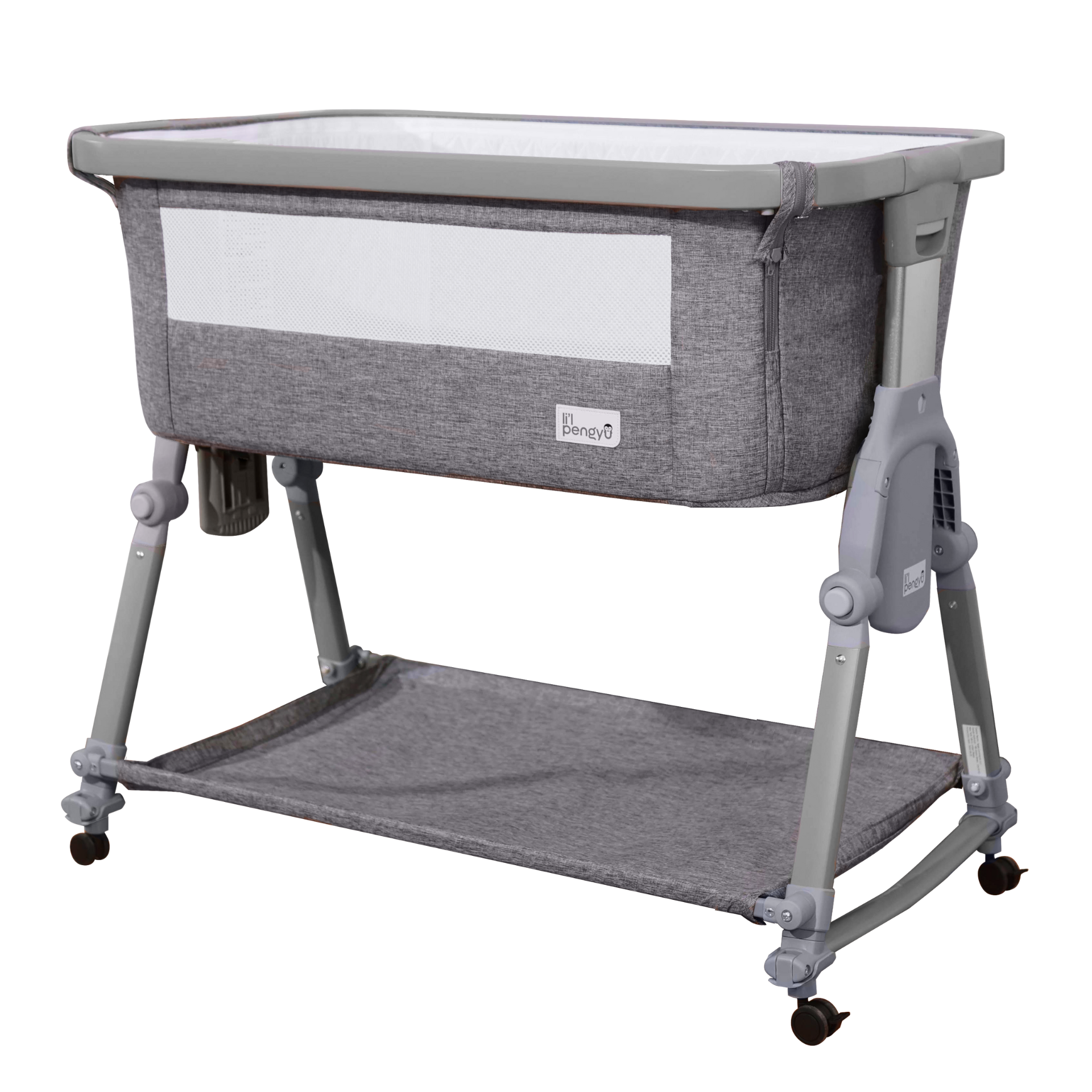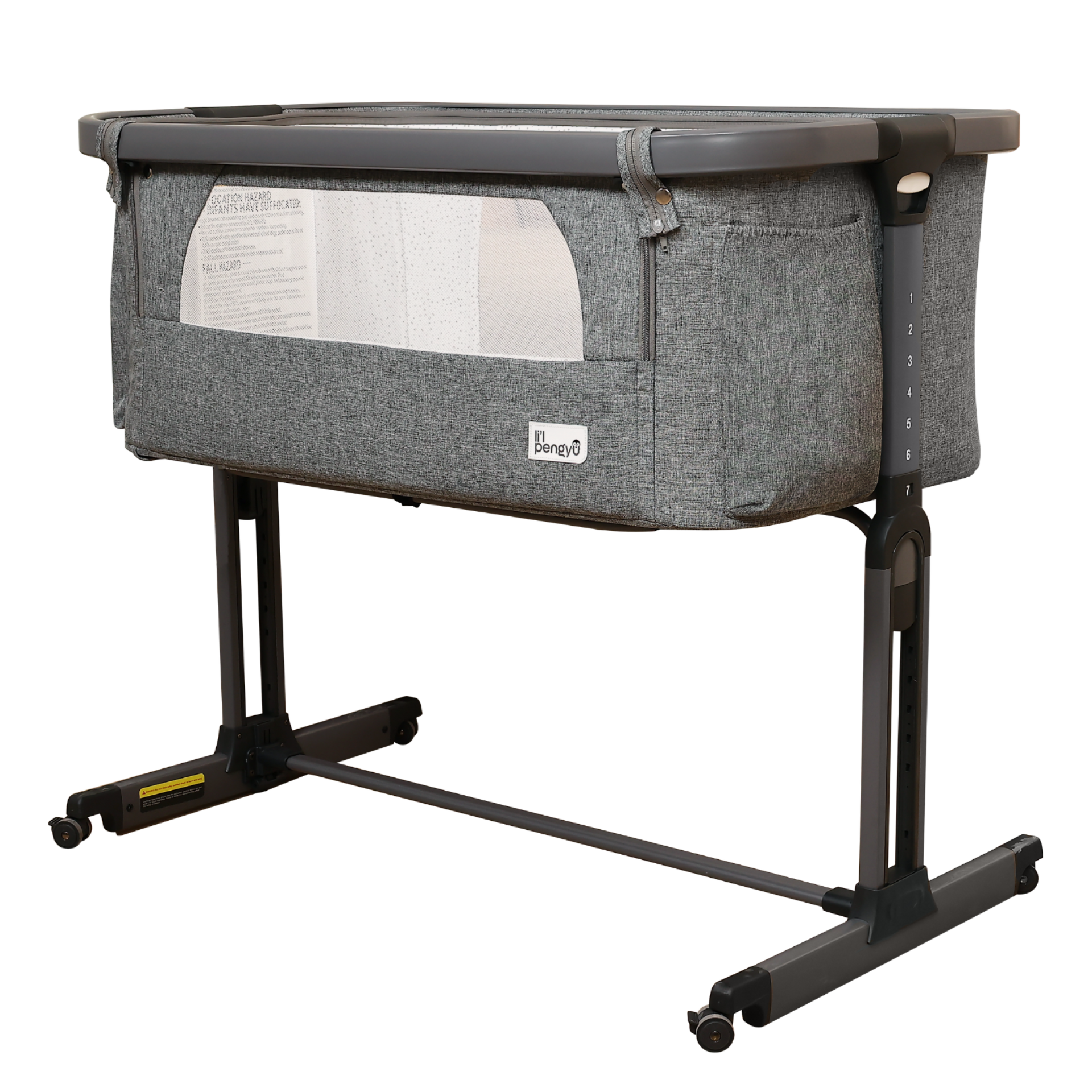Baby talk: A guide to your baby’s first words

Talking is one of the most significant milestones parents anticipate. Some babies begin babbling and cooing leading up to the big moment when they utter their first words while others are mostly silent until they decide the time is right to talk.
While it’s difficult not to worry if your baby isn’t doing what you see other babies doing, remember that each child is different and grows at their own pace. Fortunately, many language and speech indicators will tell you that your bundle of joy is progressing just fine.
Now, let’s delve into some of the early communication skills babies typically use, when they start verbally talking with words, and what to do if speech or language is delayed.
How babies communicate
Babies communicate as soon as they enter the world by crying. It is their main way to communicate at first, and in the magical realm of parenthood, parents learn to understand what each type of cry means.
Babies will also begin to develop other ways of getting their points across relatively quickly. Here are a few of the most common ways they communicate at different ages:
Two months: They give you their attention
Around the two-month mark, babies turn their heads to see who is talking to them. They coo and gurgle in response to conversation.
Four months: Let the babbling begin
Babies begin to babble cute, incomprehensible syllables by the age of four months. They will take turns in a conversation making their own sounds and mimicking your sounds and intonations.
Six months: Pronounced sounds
The back-and-forth conversations continue and become more defined by six months. “B” and “M” sounds become part of their vernacular, and most babies can respond to their names at this stage. They show happiness with squeals and often blow “raspberries” to express their feelings.
Nine months: Arm raising and beckoning
Babies raise their arms when they want to be picked up and can signal when they want attention by around the 9-month mark. Typically, they will use a few sounds and syllables to tell you what they need.
Seeing these milestones indicates that your baby is learning to communicate with you and will soon be saying their first actual words.
Baby’s first words
While many babies start uttering words by their first birthday, it isn’t uncommon for this to happen earlier or later. Around year one is also when receptive language skills are refined, meaning babies start to better understand what’s said to them.
Babies’ first words typically contain m, d, and b sounds, such as:
- Mama
- Dada
- Baba
- Bye bye
Other words babies characteristically learn first are names of siblings and family members, toys, and objects they regularly use like the bath, car, and spoon.
Baby’s first sentences
Once babies learn a few words that help them express their needs, they start to string them together. They may come up with their own combinations of words or repeat what they hear. In most cases, they create a vocabulary and work with it for weeks or months before adding new elements.
At around 18 months, children experience a burst in language skills and learn one or more words per week. By two years old, they can string together simple sentences that most people can understand.
Speech and language delays
Speech and language delays affect how children use their words and put sentences together. A baby who doesn’t respond to sounds or make any cooing noises should see a pediatrician immediately. Other more subtle warning signs of speech and language delays include:
- Not gesturing, like waving bye or pointing
- Using gestures exclusively
- Trouble repeating sounds
- Difficulty understanding simple requests
- Speech is very hard to understand
- Voice has an unusual raspy or nasal sound
Early detection is critical. Oral impairment, hearing problems, and infections can all cause speech delays.
- Oral impairment – Issues with the tongue or the roof of the mouth (palate), such as a short frenulum (the fold beneath the tongue), which limits tongue movement.
- Hearing problems – Trouble hearing certain tones or not hearing at all. An audiologist can test a baby’s hearing when speech concerns arise.
- Oral–motor problems – A problem in the parts of the brain responsible for speech, making it hard to coordinate the lips, tongue, and jaw to produce speech sounds. Other oral-motor problems include feeding issues.
- Ear infections – Infections in the inner or outer ear. Learning speech is difficult or impossible when you can’t hear it properly. Ear infections can cause impairments that disrupt hearing.
Quick detection and treatment can help stop further delays or damage.
Getting a diagnosis
A speech therapist checks your child’s speech and language skills. They conduct standardized tests to detect speech and language development markers to determine:
- Sound development
- Clarity of speech
- Receptive language – What your child understands
- Expressive language – What your child can say
- Oral–motor status – How the tongue, palate, and mouth work together for speaking, eating, and swallowing
The speech-language pathologist might recommend speech therapy for your child based on the test results.
This is an exciting time for both parent and baby, but you may have to jump a few hurdles in the process. Little ones may feel frustrated if no one understands them, and parents can feel the same way when they can’t understand their little ones.
Patience is crucial. This process can be tough on everyone, and staying positive can make it much more manageable. Above all, remember that babies progress differently. Starting a little later than average is no cause for alarm. So, just sit back and enjoy that sweet baby talk.
Make sure your baby gets a restful sleep at all phases of growth
Babies also learn to sleep through the night as they learn new words. At Li’l Pengyu, we understand that being a first-time parent can be difficult, so we aim to make things easier. Our bassinets and playpens are designed to be easy to assemble, transportable, and safe. See everything we offer here.






